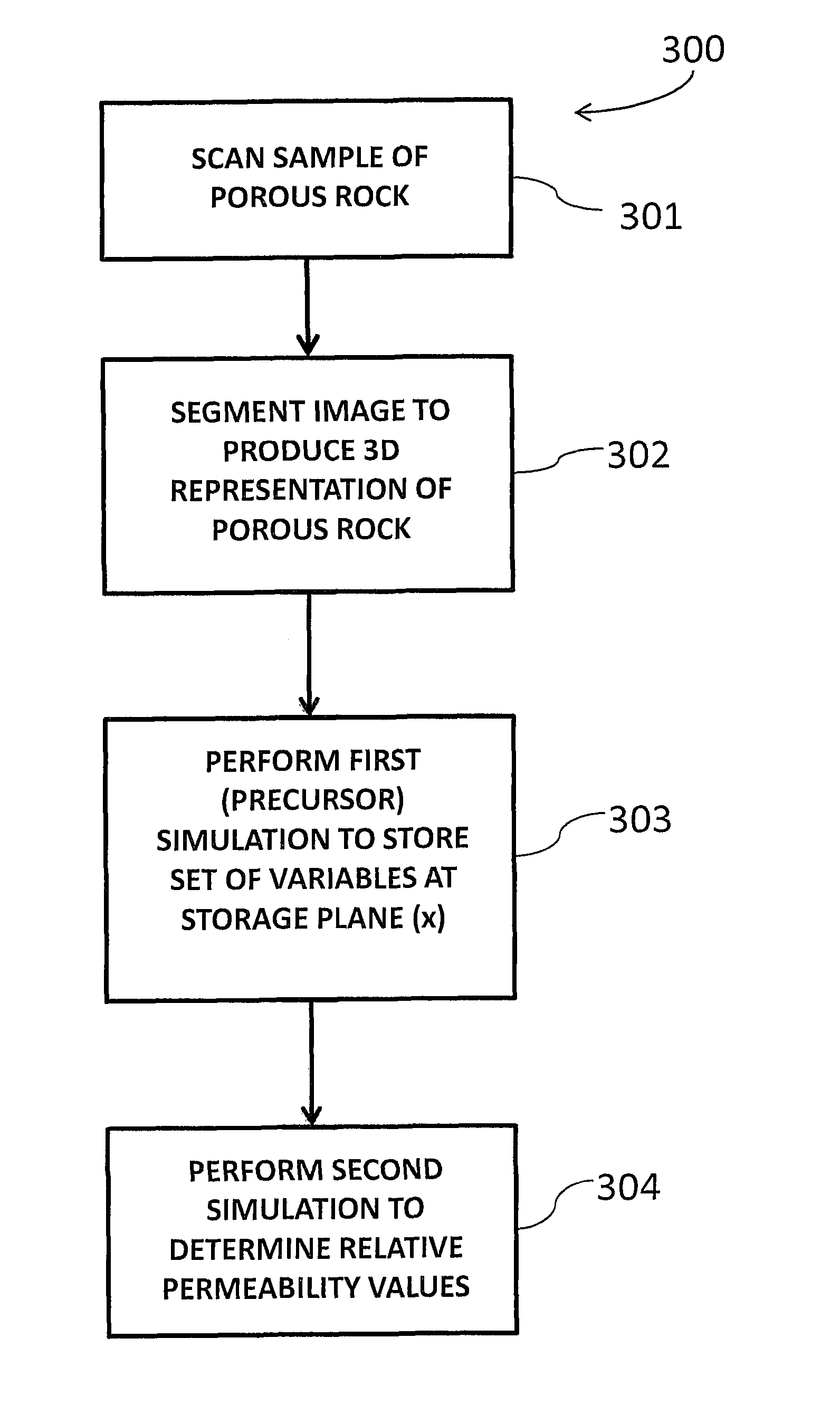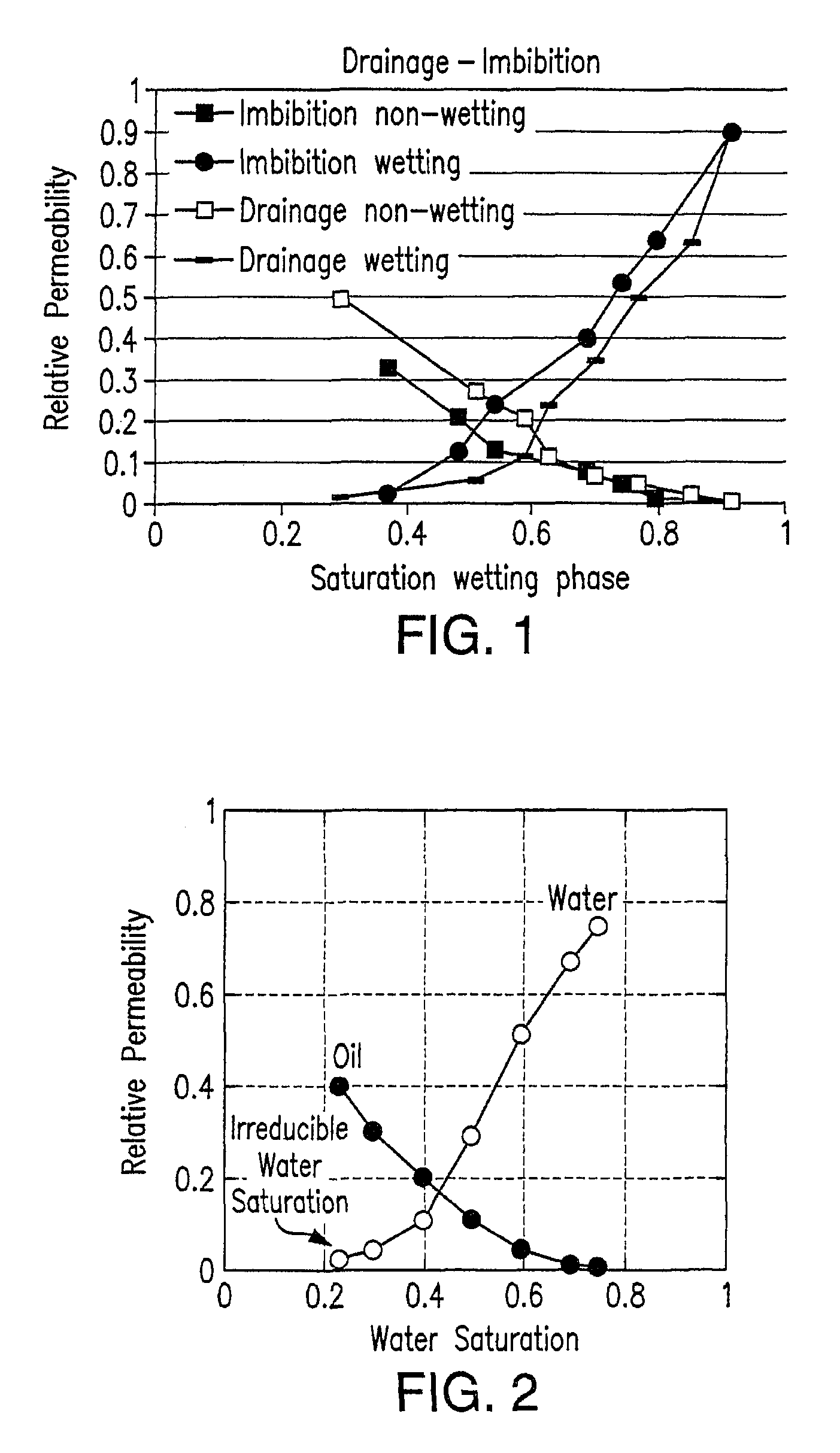Method for evaluating relative permeability for fractional multi-phase, multi-component fluid flow through porous media
a technology of porous media and relative permeability, which is applied in the direction of cad techniques, instruments, borehole/well accessories, etc., can solve the problems of equipment malfunction, difficulty in creating artificial conditions to replicate downhole conditions, and inability to effectively contact another material with solid materials,
- Summary
- Abstract
- Description
- Claims
- Application Information
AI Technical Summary
Benefits of technology
Problems solved by technology
Method used
Image
Examples
Embodiment Construction
[0054]The present invention relates in part to a method for computing relative permeability for fractional multi-phase, multi-component fluid flow through a porous medium. The method can employ a three-dimensional (3D) digital representation of a porous medium integrated with a computational fluid dynamics (CFD) method of calculating fractional flow rates, pressures, saturations, internal velocity vectors, and / or other flow parameters, which can provide improved determinations, e.g., more rapid and / or accurate determinations, of fluid transport properties of the porous medium. These determinations of fluid transport properties can include calculating or estimating the relative permeability of wetting and non-wetting phases (fluids) in the porous medium. The present invention further relates in part to a method which integrates a single-phase-inlet precursor simulation used to evaluate distribution of pressure, saturation and velocity map (that are set of variables) at different satu...
PUM
| Property | Measurement | Unit |
|---|---|---|
| temperatures | aaaaa | aaaaa |
| relative permeability | aaaaa | aaaaa |
| volume | aaaaa | aaaaa |
Abstract
Description
Claims
Application Information
 Login to View More
Login to View More - R&D
- Intellectual Property
- Life Sciences
- Materials
- Tech Scout
- Unparalleled Data Quality
- Higher Quality Content
- 60% Fewer Hallucinations
Browse by: Latest US Patents, China's latest patents, Technical Efficacy Thesaurus, Application Domain, Technology Topic, Popular Technical Reports.
© 2025 PatSnap. All rights reserved.Legal|Privacy policy|Modern Slavery Act Transparency Statement|Sitemap|About US| Contact US: help@patsnap.com



